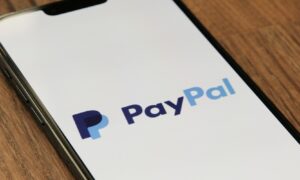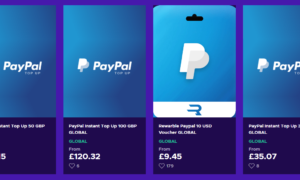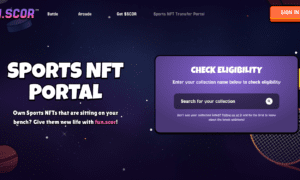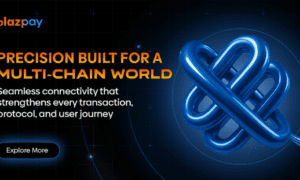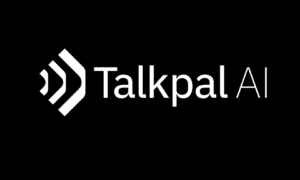Welcome to the world of online transactions, where convenience meets flexibility! PayPal, a trusted name in the realm of digital payments, has revolutionized how we exchange money over the internet. But here’s a burning question that might be lingering in your mind: Can you use PayPal without a bank account? Fear not, fellow tech-savvy individuals—today we embark on an exciting journey as we explore various options for harnessing the power of PayPal even if you don’t have a traditional bank account.
Introduction:
In today’s digital age, online payment methods have become an integral part of our daily lives. With the rise of e-commerce and online shopping, having a reliable and secure way to make payments is essential. One popular choice for online payments is PayPal. Founded in 1998, PayPal has emerged as one of the leading digital payment platforms, with over 361 million active users worldwide. In this section, we will explore why PayPal has gained such immense popularity and why it is a preferred choice for making online payments.
What is PayPal, and How Does It Work?
PayPal is a popular online payment service that allows individuals and businesses to send and receive money securely over the internet. It was founded in 1998 and has since grown to become one of the most widely used payment platforms globally, with over 377 million active users as of 2021.
So, how does PayPal work? Let’s break it down into three simple steps:
1. Setting up a PayPal account: To use PayPal, you first need to create an account by providing your personal information, such as your name, email address, and password. You can sign up for either a personal or business account, depending on your needs.
2. Linking a bank account or credit/debit card: Once you have created your PayPal account, you will then need to link it to a funding source. This could be your bank account or credit or debit card. This step is crucial, as it allows you to transfer funds from your linked accounts to your PayPal balance.
3. Sending and receiving payments: With your PayPal account set up and linked to a funding source, you can now start sending and receiving payments. To make a payment using PayPal, simply log in to your account, click on the “Send” button, enter the recipient’s email address or phone number along with the amount you wish to send, and confirm the transaction. Similarly, when someone sends you money through PayPal, they will need your email address or phone number associated with your account.
Do I need a bank account for PayPal?
If you’re new to the world of online payments and e-commerce, you may be wondering if having a bank account is a requirement for using PayPal. The short answer is yes; you do need a bank account in order to use PayPal. However, there are some exceptions and alternative options that we will explore in this section.
Firstly, let’s clarify why having a bank account is necessary for using PayPal. As an online payment service, PayPal acts as a middleman between your bank account and the merchant’s or individual’s account. This means that when you make a transaction through PayPal, the funds are either transferred from your linked bank account or charged to your credit or debit card associated with that bank account.
In order to verify your identity and ensure secure transactions, PayPal requires users to link their bank accounts during the sign-up process. This also allows them to withdraw funds from your linked bank account if needed. So if you don’t currently have a bank account, it would be best to open one before signing up for PayPal.
However, there are some instances where having a traditional bank account may not be possible or desirable for certain individuals. For example:
1) Minors under the age of 18: In most countries, minors are not allowed to open their own bank accounts without parental consent. Therefore, they may not be able to link their own personal accounts with PayPal.
The short answer
The short answer is yes; it is possible to use PayPal without a bank account. However, there are some limitations and alternative options that you should be aware of.
Firstly, let’s clarify what we mean by “using PayPal without a bank account.” This can refer to two different scenarios: either not having a linked bank account at all or having a bank account but choosing not to link it with your PayPal account.
If you fall into the first category and do not have a bank account, then you can still use PayPal by linking it with your credit or debit card instead. This method allows you to make purchases using the funds on your card, and any payments received will also be deposited onto your card. Keep in mind that some merchants may not accept credit or debit cards as payment methods through PayPal, so this option may not be suitable for all transactions.
On the other hand, if you do have a bank account but choose not to link it with your PayPal account, then you can still use the platform for certain purposes. For example, you can send money to friends and family using your PayPal balance or a linked credit or debit card. However, note that sending money for goods or services purchased online would require a linked bank account or credit or debit card.
What happens if you don’t have a bank account?
If you don’t have a bank account, you may be wondering if it’s possible to still use PayPal as a form of payment. The short answer is yes, but there are some limitations and alternative options to consider.
Firstly, it’s important to understand why having a bank account is typically required for using PayPal. A bank account allows for electronic funds transfers, which is the primary way that money is moved between PayPal and your personal accounts. Without a bank account, you may not be able to make payments or receive funds through PayPal.
So what happens if you don’t have a bank account? Here are some potential scenarios:
1. Limited functionality on PayPal: If you try to use PayPal without linking it to a bank account, you may only be able to make purchases with existing funds in your PayPal balance. This means you won’t be able to withdraw or transfer money from your account or set up automatic payments.
2. Difficulty receiving payments: Without a linked bank account, it may also be challenging for others to send money directly into your PayPal account. They will likely need your email address or mobile number associated with the account instead of just your username.
3. Inability to link credit or debit cards: Another common way people use PayPal is by linking their credit or debit card as an additional funding source. However, this option may also not be available without a linked bank account.
Alternative Options for Using PayPal Without a Bank Account
If you do not have a bank account or prefer not to use it for online transactions, there are alternative options available for using PayPal. In this section, we will explore some of the different ways you can still use PayPal without having a bank account.
1. Use a Prepaid Debit Card:
One option is to link a prepaid debit card to your PayPal account. These cards can be purchased at many retail stores and allow you to load money onto them for online purchases. You can then link the card to your PayPal account and use it to make purchases or transfer funds.
2. Linking a Credit Card:
Another option is to link a credit card instead of a bank account. This allows you to use your credit card as your funding source when making payments through PayPal. However, keep in mind that there may be additional fees associated with using a credit card on PayPal, so make sure to check with both your credit card company and PayPal before using this method.
3. Using cash cards:
Some financial institutions offer cash cards that function like debit cards but do not require a traditional bank account. These cards can often be linked with your PayPal account, allowing you to add funds and make purchases without needing a bank account.
4. Request money from friends or family:
If you need to receive money through PayPal but do not have a bank account linked, another option is to request money from friends or family who have PayPal accounts.
How does it work?
To get a PayPal Cash Mastercard, you must first have a verified PayPal account. You can apply for the card online through your PayPal account or by downloading the PayPal app on your mobile device. Once approved, you will receive your physical card in the mail within 7–10 business days.
Once activated, you can add funds to your card by transferring money from your PayPal balance or linked bank account. You can also deposit cash into your card at select retailers such as Walmart, CVS, and 7-Eleven using the “Cash Load” feature on the app.
Using your card
The PayPal Cash Mastercard works just like any other debit card. You can use it to make purchases in-store and online, wherever Mastercard is accepted. You can also withdraw cash from ATMs worldwide with no fees from PayPal (though ATM owners may charge additional fees).
Pros and Cons of Using PayPal Without a Bank Account
Pros:
1. Convenient and Easy Setup: One of the biggest advantages of using PayPal without a bank account is the convenience it offers. Unlike traditional banking methods, you do not need to go through a lengthy process of opening a bank account or providing personal information. With just an email address and password, you can easily set up a PayPal account in minutes.
2. Secure Transactions: PayPal uses advanced security measures, such as encryption technology, to protect your financial information and keep your transactions secure. When you make a payment using PayPal, the recipient will not have access to your sensitive banking details, reducing the risk of fraud or identity theft.
3. Access to Online Shopping: Many online retailers accept PayPal as a payment method, making it easier for you to shop online without the need for a bank account. This means that even if you do not have access to traditional banking services, you can still enjoy convenient online shopping with PayPal.
4. Multiple Payment Options: Without linking a bank account, you can still add funds to your PayPal account through various options such as debit or credit cards, prepaid cards, and even cash at select retail locations. This allows for flexibility in managing your finances and making payments.
Cons:
1. Limited Withdrawal Options: The main drawback of using PayPal without a bank account is that your withdrawal options are limited. You cannot transfer funds from your PayPal balance directly to cash unless you have linked a bank account or credit card.
When it comes to online payment methods, PayPal is a popular choice among many consumers. It offers a fast, secure, and convenient way to make purchases and send money to others. However, one common question that arises is whether or not you can use PayPal without a bank account.
The short answer is yes—it is possible to use PayPal without linking it to a bank account. In fact, there are several options available for those who do not have access to traditional banking services but still want to utilize PayPal as their preferred payment method.
Using a debit card
One of the most straightforward ways to use PayPal without a bank account is by linking your debit card instead. This allows you to make purchases and payments directly from your linked debit card balance. You can also add funds to your PayPal account through this same method.
To link your debit card with PayPal, simply go into your account settings and select “Link a Card.” Enter your card details as prompted, and confirm the process by following the on-screen instructions. Keep in mind that some fees may apply when using this option.
Using prepaid cards
Another way to use PayPal without a bank account is by using prepaid cards. These are essentially like gift cards that you can load with funds and then use for online purchases. Many major retailers offer prepaid cards that can be used for online transactions, including Walmart MoneyCard, Visa Prepaid Card, or American Express Bluebird.
Conclusion
Paypal is a widely used online payment system that offers convenience and security for making transactions. While having a bank account linked to your Paypal account is the most common way to use the service, there are still options available for those who do not have a bank account.




